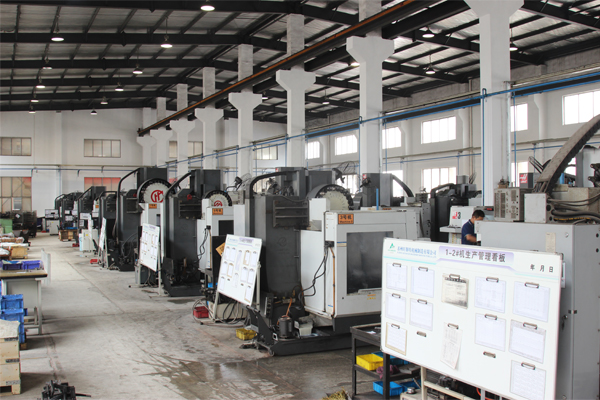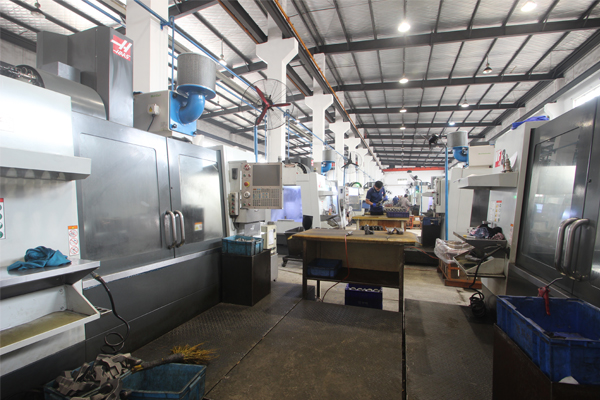As we all know, reducing energy consumption, reducing environmental pollution and saving the limited resources of the earth is a very important and urgent task facing people today. Driven by the general trend of lightweight products such as automobiles and 3C, it can be predicted that the market of non-ferrous metal castings, especially light metal castings, will develop greatly in the next 10 years in China.
Nonferrous metal castings account for 14-21% of the total castings in the major casting producing countries. Among them, aluminum and magnesium alloy castings account for 13-19% of the total castings, and the highest in Italy is 38% and 28% respectively. In mainland China, only 7.4% of non-ferrous metal castings, 5.7% of aluminium and magnesium alloy castings (according to 2000 output statistics), 24.7% and 20.6% respectively in Taiwan (according to 1998 output statistics). It can be seen that there is still considerable room for development of the casting Market of aluminium and magnesium alloys in China in the future. Our government and industry associations attach great importance to the development opportunities and serious challenges faced by foundry industry, and take corresponding countermeasures immediately. Following is a brief analysis of the development direction of aluminium alloy casting technology and the progress of magnesium alloy industrialization in China.
1.Development Direction of Aluminum Alloy Casting Technology
Aluminum alloy is the most commonly used material in light metal materials. More than 90% of aluminium castings in developed countries are now used in automobile industry. Aluminum alloy castings play an important role in promoting automobile lightweight. However, as a mass-produced aluminum alloy casting, there are still many problems to be solved in order to meet the requirements of lightweight.
(1)、Further optimization of casting process and development of alloy materials
In the past, when choosing casting technology and materials according to the conventional method, the characteristics of parts and the shape of parts should be considered first. Complicated castings with thin cores are cast by low pressure casting, thin-walled castings with shell are cast by die casting, and high strength castings with thick wall are required by squeeze casting. However, with the high performance of automobiles, the performance requirements for parts have also improved. Castings are often required to have thin-walled, complex shape, high strength and high quality characteristics. In order to meet this requirement, corresponding technological development should be carried out. Fig. 1 is the future development direction of the main casting technology of aluminium alloy.
Low pressure casting technology should improve the casting technology of complex thin-walled castings in order to meet the requirements of high strength and high productivity. On the one hand, the existing inert gas filling and gold pumping methods are used to improve the filling ability of the aluminum liquid. At the same time, the computer can control the gold water cooling system and the gold mold temperature to improve the casting quality.
To make use of the high productivity of die casting process, it is necessary to produce high quality and complicated thin-walled castings. Vacuum die casting is proposed to prevent air entrainment into the metal cavity in order to obtain high quality castings which can be heat treated. In order to reduce the filling speed and pressure, sand core die casting technology can be used to adapt to the transfer of some castings originally produced by low pressure casting or sand mould casting to automobile die castings requiring high strength, high toughness and good productivity.
Extrusion process is suitable for thick-walled castings requiring high strength, high toughness or high pressure resistance, and its application can be seen to increase in the future. Such parts are also suitable for semi-solid forming, and their applications will increase in the future. Compare the characteristics of various manufacturing processes from cost and quality as shown in Figure 2.
In order to meet the above requirements of high quality castings, the corresponding alloy smelting, casting technology and the development of alloy materials are also very important. In particular, the development of new alloys for die casting matching the characteristics of special die casting process has been put on the agenda. Because of the low-speed filling and vacuum die casting technology, T6 heat treatment is possible. But up to now, few die casting alloys have taken heat treatment into account. The two commonly used die-casting alloys are Al-Si near eutectic compositions, and then add 1.5-4.0% copper. Now it is very common to heat them directly. It should be said that the potential of developing new alloys matching various die casting processes in the future is not small. It can be seen that by means of heat treatment, the material characteristics and reliability of castings have been greatly improved, so that die castings can be extended to the market which is difficult to apply up to now.
It should be pointed out that in order to meet the strict requirements for castings, it is absolutely necessary for each production enterprise to improve its casting technology and production technology, but they all have their own limitations. Recently, the topic of improving the quality of liquid aluminium has attracted much attention. In order to improve the quality of molten aluminium, it is particularly important to purify the liquid aluminium, and the amount of hydrogen absorption and inclusions in the liquid aluminium should be minimized. Generally speaking, the most important factor determining the quality of casting is the quality of molten aluminium. Even if the subsequent casting links are excellent, if the quality of molten aluminium is not good, there can be no good casting. The main factors affecting the quality of liquid aluminium are principal component, trace component, gas content, inclusion and temperature. In order to improve the quality of liquid aluminium, first of all, we should start with raw materials coming into the factory, strengthen the management in the whole process of melting and liquid aluminium treatment, pouring and inspection before the furnace, and then equip advanced hardware to ensure the effective implementation of the process.
(2)、Reduce manufacturing costs
Manufacturing cost of producing aluminium alloy castings is a big problem. In many cases, whether the end users adopt it or not and whether the sale can be made are judged by manufacturing cost. Because of the high cost of the aluminium alloy materials, models and fixtures, the manufacturing cost of the parts increases. Reducing foundry waste and using cheap and suitable materials can reduce the manufacturing cost. At the same time, technological development should be carried out to reduce the manufacturing cost of other aspects. For example, low pressure casting can shorten the casting cycle by water-cooled gold mold, and use a multi module technology and automation technology to improve productivity and prolong die life to reduce cost. For example, in the aspect of design, from sand mould or low pressure casting to the shape of die casting parts which are more suitable for making low-cost parts, the production design which reduces the number of parts due to integration is carried out.
(3)、Shorten product development cycle
In order to better meet the needs of users and reduce development costs, development time should be shortened. In order to design and produce thin-walled, complex and high-quality castings economically in a short time, high-level design and production technology is needed. Sometimes the trial production of high quality castings on the basis of experience takes time and costs increase because of mistakes. For this reason, computer simulation technology can be used to study a variety of process schemes on the computer first, in order to shorten the development time, which is also a very important work.
(4)、Recycling and regeneration technology
According to the Aluminum Association of America, the recovery rate of aluminium in the world is about 85%, 60% of automobile aluminium comes from recycled waste, and it is expected to rise to 90% by 2010. The production of a ton of new aluminium ingot consumes 5090 kcal (17,000 kcal) of energy, while the reclaimed aluminium ingot consumes 1.31 million kcal of energy per ton, only 2.6% of the new aluminium ingot. At the same time, the amount of CO2 produced in recycled aluminium ingot production is much less than that of new aluminium ingot production, so from the aspects of energy saving, resource saving and environmental protection, the recycling of aluminium is the requirement of the times. China's metal recycling industry is still relatively backward. In recent years, with the development of automotive aluminium alloy casting industry and the intensification of market competition, modern secondary aluminium ingot production bases have been established and a number of advanced equipment have been introduced. Future research topics are: to develop effective separation technology of aluminium from waste materials of composite materials and heterogeneous materials; to establish a wide range of decentralized and economic recycling social system of waste aluminium materials; to grasp market trends in real time according to the relative price of new ingots and waste and the relationship with exchange rate.






